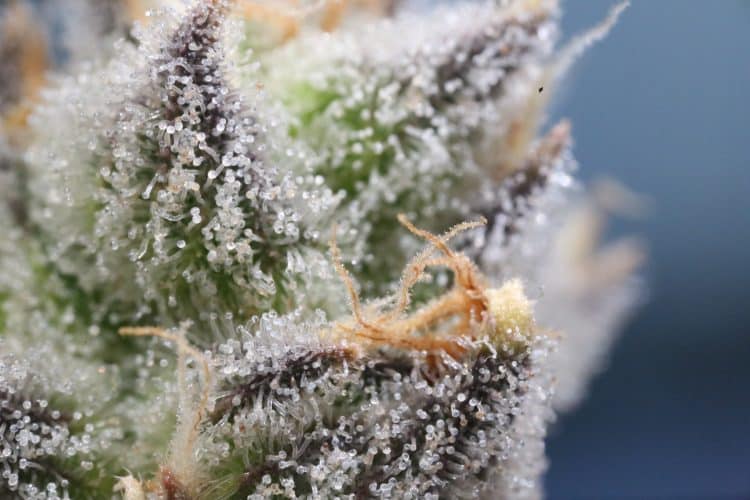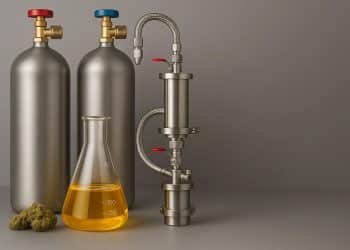Plant extraction in the cannabis space is a technique that typically uses harvested dry flower in order to create THC, CBD, or CBG-rich concentrates, but is also common with other plants like peppermint, for example, in order to create essential oil extracts. Monitoring glandular trichome development is absolutely crucial with either of these types of plants in order to reap the benefits of the unique metabolites each one “unlocks” once harvested at the peak time and then extracted or activated.
Trichome composition & purpose
Within the glandular trichome heads of cannabis plants specifically, one will find cannabinoids, terpenes, and flavonoids. These metabolites are found along the base of the trichome heads, within secretory disk cells. These adaptive compounds appear as tiny “hairs” on the plant’s surface, and exist to provide a first line of defense against insects, pathogens, and herbivores. The trichomes that derive from cannabis and hemp plants specifically interact with the human endocannabinoid system to create psychoactive and/or possibly therapeutic effects to the consumer once activated and consumed.
Terpenes are important metabolites within glandular trichomes for their wide-spectrum of flavors and aromas. These terpenes are vital when harvesting botanical materials for the sake of creating essential oils and make up a large part of the basis of unique fragrances and flavors. Not to mention possible therapeutic effects such as anti-inflammation and analgesic properties found within varying types of cannabis and hemp cultivars.
Trichome development
The point at which to harvest cannabis and other botanicals for extraction should always depend on the maturation of the trichome heads as seen under a microscope, jeweller’s loupe, or DSLR camera lens. There are three different types of trichomes on cannabis plants specifically that can then be seen: bulbous, capitate sessile, and capitate-stalked – the latter of which contains the highest percentage of cannabinoid and terpene-rich metabolites.
Trichomes develop in four different stages – clear, milky, amber, and mixed. Clear trichomes are developing THC in its earliest stages and are not typically harvested during this period, they are however a great sign that your plant is on its way to proper trichome maturation.
Optimal potency and flavor begins during the milky/cloudy trichome period that can last up to two weeks during the cannabis plant’s growth. It is at this point that the more sedative THC-related effects of the cannabis flower start to become prevalent, creating an extract that will do the same and is typically optimal in a 1:1 ratio with CBD for a strong entourage effect.
CBD is usually in abundance with the amber trichome period that eases some of the psychoactive effects of cannabis. Concentrates that are extracted with cannabis during this stage are more medicinally-optimal due to their potential for pain relief. A rate of around 60 percent amber trichomes is a typical harvest time for indica-dominant cultivars.
Mixed trichomes are where the sweet spot lies for peak psychoactive effects that constitute the bulk of concentrates found in the recreational cannabis market. A ratio of somewhere around 70 percent cloudy trichomes and 30 percent amber trichomes is found to be ideal to harvest and extract for maximum potency in concentrates.
Cultivators and extractors that make fresh frozen concentrates sometimes pause harvesting the flower a little longer in order to further develop unique terpene profiles as the plant continues to grow. Other botanical extracts such as peppermint essential oils as mentioned before, typically are harvested around peak flower blossom – a point at which the trichomes contain the maximum amount of rich, aromatic terpenes.
Trichomes hold the keys to unique terpene profiles and cannabinoid potency and efficacy. Extracting botanicals during the proper phase of the glandular development of the trichomes will help to ensure concentrates and extracts produced by them will provide these desired properties as intended.












